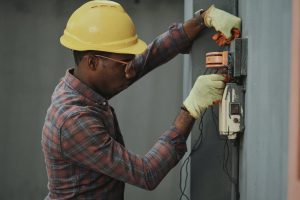As the population of Australia increases in the next few years, school becomes a lucrative business opportunity. Of the many learning methods, Montessori education seems to be one of the most popular, if not the most sought after.
According to the 2016 annual report of Montessori Australia, there were already 41 independent schools across the territories. Public schools also adopted at least 12 programs. Pre-schools that teach Montessori principles numbered 62.
There were already hundreds of locations offering it, and the organization’s engagement with their target market, especially in social media, can be an indication of increasing interest. But how do you build a Montessori school? Here are some facts to keep in mind:
Montessori Principles
Montessori principles, designed by its founder Dr. Maria Montessori, focus on experiential learning. That makes it vastly different from the methods of traditional or conventional classroom settings. The classroom allows children with freedom of movement and choice. They interact with objects and their peers as freely as possible. They engage in play.
What the teachers do is to guide and facilitate the children. Most of all, they need to keep track of the kids’ development so they can create activities that will help them grow and meet their needs, according to age and personal growth.
Montessori schools usually don’t provide grades to parents. Instead, they provide anecdotal reports. This is because the approach acknowledges children learn things at their own pace.
Design of the Classroom

Classroom design figures heavily in Montessori education. Space is a must since children will have to do exploration and learning either by themselves or with their peers.
There is no focal or central point, which means there’s no teacher’s desk in the middle of the classroom. Nor is there a board. You will not see a lot of desks, either. Instead, the class can have workstations where various materials are available for the kids to use.
It’s essential the furniture pieces are all age-appropriate. In other words, their size should fit the user, who can range from toddler to teen. It’s also common to find low-lying shelves for easy and convenient interaction.
Montessori classrooms make use of natural materials as much as possible. They also utilize lights with a soft glow. All these create a feeling of safety and calmness for the children.
Day Schedule
Montessori day schedules also follow a structure, but they’re not the same as those of traditional schools. Every day can have different types of activities, depending on the subject in focus. The teacher can also create activities designed for individuals or groups.
Montessori education doesn’t have grade levels. Instead, they group children according to their ages. This is to ensure the designed activities are suitable for their ages. This also makes it easier for the teacher to track the development of the children carefully.
Because of the vast difference between traditional education and Montessori learning, there might be a learning curve for you, your future teachers, and students. It might even be hard to convince parents to shift to it.
If you need a push to stay on track, then remember that even Prince George is educated the Montessori way.


